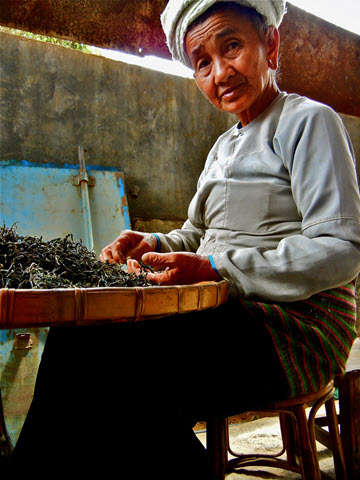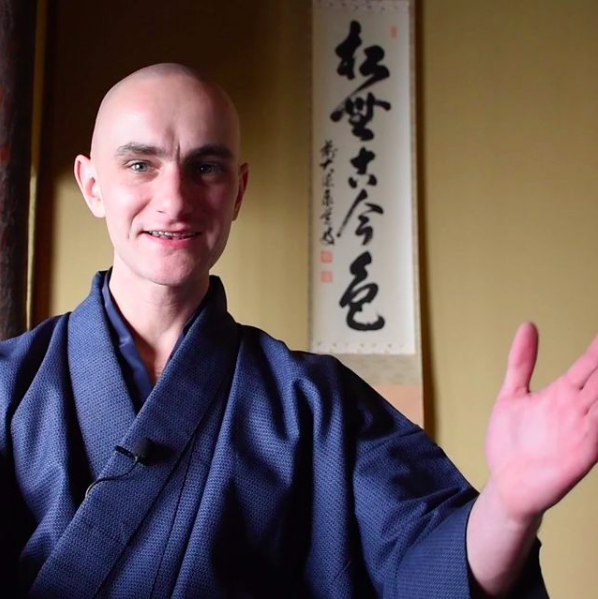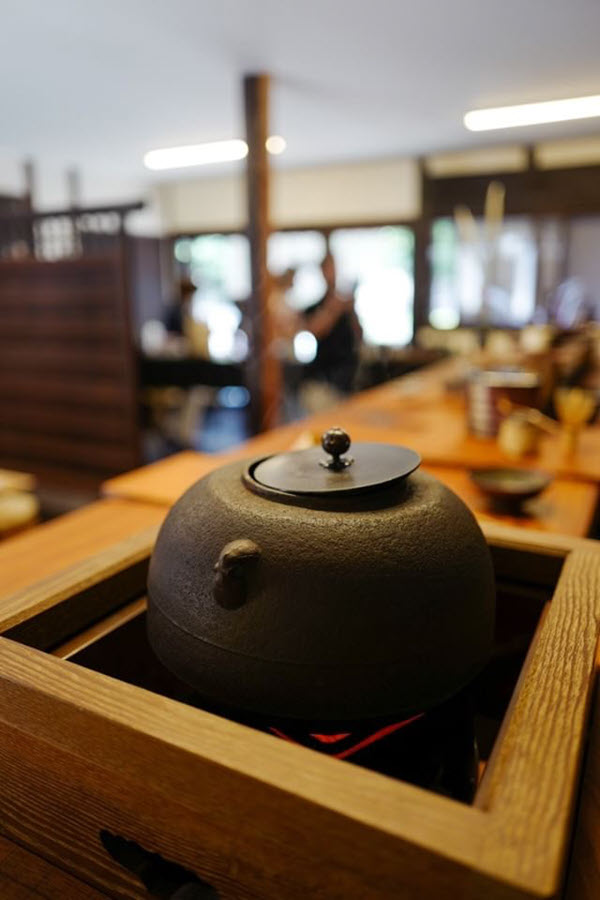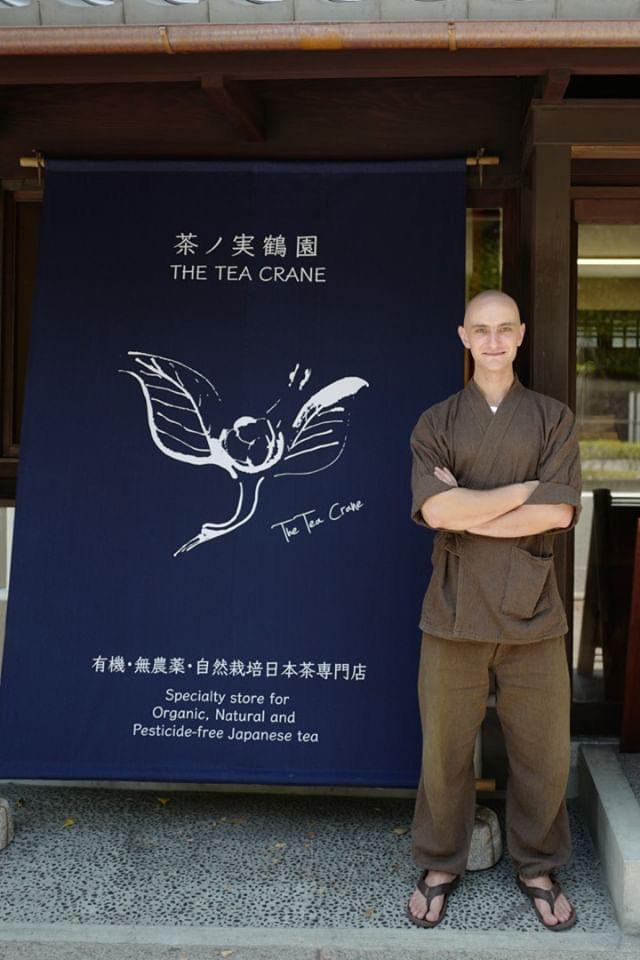Chitrita Banerji is one of the most important chroniclers of food history, having written extensively about food and culture, in particular of food in Bengal. After graduating in English in Calcutta, she moved to the US for a Masters in Literature from Harvard University. She now lives in Cambridge, Mass. Her first book, Life and Food in Bengal was published in 1991. And from there on, food became her medium for storytelling. She has since published The Hour of the Goddess: Memories of Women, Food, and Ritual in Bengal; Bengali Cooking: Seasons & Festivals; Eating India: An Odyssey into the Food and Culture of the Land of Spices, besides fiction and biography. While America has become home, she has retained a close connection with India, especially Calcutta and Bengal.
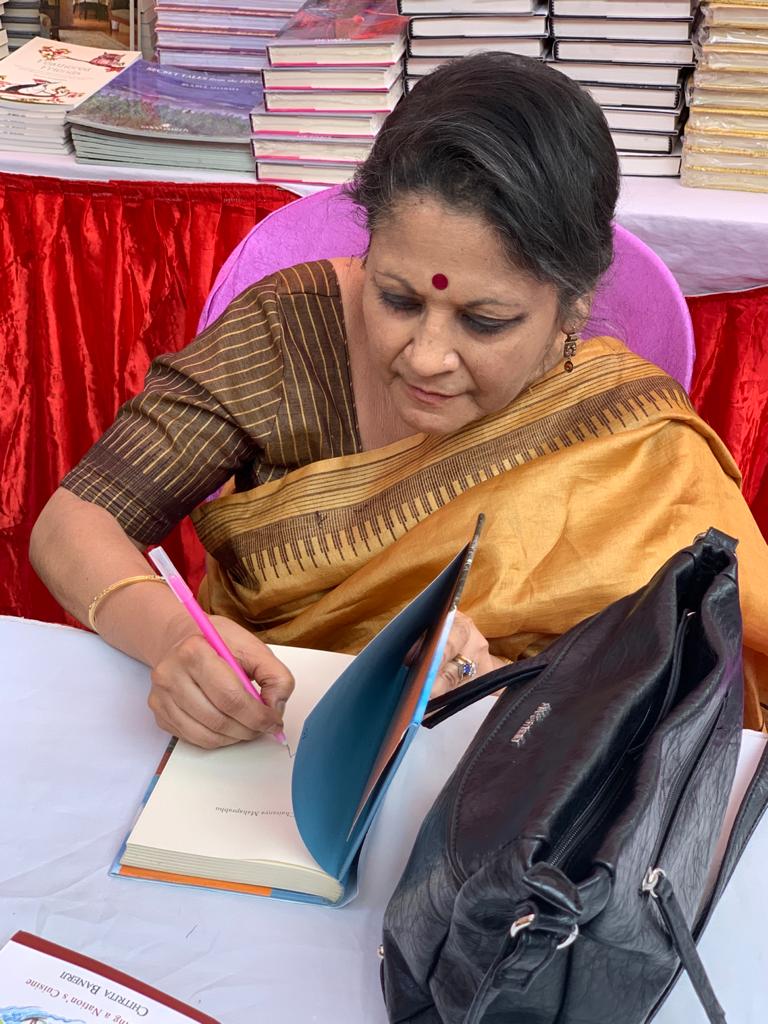
Tea is Both Cultural and Personal
I discovered Chitrita Banerji’s writing in 2006. Her article, “What Bengali Widows Cannot Eat,” was my introduction to food writing. It’s common knowledge here that the Bengali loves their tea. And except for one, so far, every Bengali or Calcuttan I have met has confirmed that tea is a big part of their lives and had a story on the ready. To the Bengali, tea is both cultural and personal. I am curious about where one ends and where the other begins. So, for International Tea Day, I asked to have a conversation with her, on tea.
Aravinda Anantharaman: I was introduced to your work through the Granta Book of India which had an article by you, What Bengali Widows Cannot Eat. It was the first time I had read something from the genre of food writing. I didn’t even know you could write about food like this. You opened up a whole world to me that way.
Chitrita Banerji: Oh, thank you. That makes me very happy. That’s one of the things that a writer is always hoping to do. I may be opening up a world for you, but by doing that, I’m also bringing you into my world. That is a very gratifying feeling always for the writer. This is the real internal community that we depend on and that nourishes us. Food writing is something that has now become very popular. I started doing it a long time ago. And right from the beginning, I felt it’s really, really limiting to think food writing is only a collection of recipes. This is what you do, this is what people eat in this part of the country or that part… What does it mean? It has to be integrated with the way they live, with the way they think or the way they relate to each other. And I felt if I cannot portray that, I don’t want to write about food. So for almost 30 years now, I’ve been in a writing about food.
Aravinda: Would you place tea as part of the Bengali food culture?
Chitrita: I am a bit hesitant about saying that although it is such a big part of Bengali social culture. When we think of food, there is a kind of a wall between food and drink, and that is true in the Western concept too; people who write about food in the Western world do not write about wine. That is a separate kind of expertise, a separate world. So, tea is not something that I would normally consider part of our food culture. And yet, it is part of our relational culture, part of our way to bond with each other. It’s interesting that a foreign drink brought in by a foreign colonial power became such an important thing and it has now — at least in Bengal, it has acquired the Bengali identity. We don’t think of it as a foreign drink anymore. In fact, very few people actually know that history, very few people realise the origins of tea, and how the British colonial politics and economics worked in order to bring tea into India and then get to marketing tea so that Indians would develop a taste for it.
It’s like some food items, like potatoes and chili peppers. We think these are our foods and just forget that 500 years ago, we’d never heard of such things, that they came with the Portuguese into India. Some of these items are really a great testament to how human beings adopt new things and then give them a character that makes it their own.
It’s a transformative process that I find very interesting. And I find that is very hopeful, not in just the context of food but in the context of our relationships with each other. Very few Bengalis can do without their tea or without their potatoes or their chili peppers. We’re not changing tea or potatoes or chili peppers into something else, but we’re making them our own by accepting them and enjoying them. And acceptance brings enjoyment, real enjoyment. And this is something people don’t think about.
Aravinda: How did your relationship with tea develop?
Chitrita: When I was growing up tea was forbidden to young people, especially young girls. Everybody seemed to believe that tea is bad for the young. And if you pressed them, they’d come up with these silly answers, like, it’s going to make your skin so dark and nobody’s going to marry you. Or it’s going to be just ruin your liver — as if it’s alcohol.
I lived in a multicultural family home, several generations. It was a very big family, many, many relatives, and also lots of visitors because we had family members living outside Calcutta who would come to visit and stay with us. A big family means many ceremonies and many occasions like weddings, engagements, birthdays… So again droves of friends and relatives would come and some would stay.
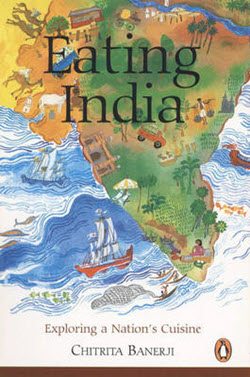
Tea was always a presence morning, noon, and night. Nobody ever seemed to think that drinking tea at night would give you sleeping problems. And this is something that I have learned after coming to the West, that caffeine in tea and caffeine in coffee is bad for sleep. Nobody used to think that way before. So even if a visitor came to your house, say at 8: 30 in the evening, the first thing you would say was Cha khabe or Cha kori? And, mostly the answer would be yes. So tea was, next to water, almost the life-sustaining drink for the Bengalis and it was not different from my family to any other family.
And as you grow up and you develop independence and you’re allowed to go out on your own and meet with friends, one of the things you would do is go to a tea shop or find a place where you can eat order some tea and sit together. We did that unthinkingly, instinctively, but there was this feeling inside us that our adda, our talk would only be enhanced if we had a cup of tea with us.
Since I was going to Presidency College, I enjoyed the coffee in Coffee House, right opposite. Most of the time there was no tea obviously. In the coffee house, you get different kinds of coffee and it was considered very sophisticated. I have to say that, though I never admitted it, I never really enjoyed coffee the way I enjoy tea. And that I attribute to my father who made me learn about tea and appreciate tea in a very sophisticated, nuanced way.
He would make different kinds of tea and I would taste bit by bit. And sometimes I didn’t like what he would consider the best tea, but he would say, well, you have to develop a taste for it. Next time when we make this, you will see that you like it a little bit better and you might enjoy it more. That never happened with coffee for me.
My mother didn’t really like the taste of tea. She would add lemon juice in her tea. It was her way of totally obviating the taste of tea. For her, unlike me, there was no father to sort of gradually inculcate her into a new taste and a new drink. When she was growing up, she never had anything and she started drinking tea – and disliking it, of course – at a comparatively late age. She had a south Indian friend who introduced her to coffee. And she just fell in love with that taste and that scent and, the flavour. And she was a very good cook. And I think she was also attracted by the process of making coffee. And once she got to develop a taste for coffee, she hardly ever drank tea. It was always my father and me.
Aravinda: The tea that your father brought home, the blends he brought, was there a certain kind of tea that you think of as the tea from your house, as being different from the tea that was made in other people’s houses?
Chitrita: Oh, definitely. My father spent a fortune on tea. There were a lot of tart comments from my mother and other family members about this. It was very high quality Darjeeling tea, I don’t remember names of estates that he preferred. I have to say, I don’t remember him telling me, Okay, this is from that estate. He would simply say, “This is a new blend that I found. I tried it. I think you might like it, or this is a new blend that I found which is stronger than what I gave you last time and less fragrant but it might actually make you feel more energised. And so I would drink expecting that to happen. And most of the time, what he said would happen did happen. It was always tea from Darjeeling, but different qualities, different blends, and sometimes they would sell tea that was not very expensive but not very cheap either where they would lend a little bit of tea dust with the tea leaves. That would be the kind of tea that you could have on a more regular basis.
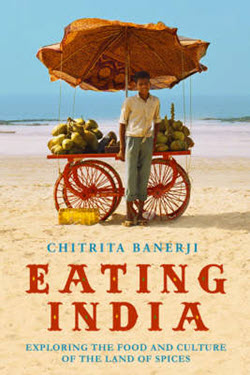
My father was obsessed with tea but he was not closed minded. When he found that after a while, I really didn’t like drinking tea with milk, he was not disappointed in me though he preferred it that way. After the first few times, I sort of settled into a pattern of drinking tea with sugar. Now I don’t drink tea with anything, just tea, but he always had the British style tea, milk and sugar and tea.
When I was older, when people came to my house, occasionally I would say, I will make the tea. My father would smile and sit there. And sometimes I failed miserably. I had a lot of trial and error to go through before I could make tea to the satisfaction of my father.
He was a really kind man, so he would never say it was undrinkable or chuck it. He always drank whatever I prepared but then he would say, maybe you should have done this, or waited a little bit. There was this whole thing of as soon as the water boils, take it off the heat. Don’t let it sit there and boil while you’re doing something else, that also affects the flavour of the tea.
It was a good training for me to do that. I didn’t learn to cook. Every time I say this, nobody believes it, but I actually loathed the idea of cooking. My mother sometimes tried to teach me. But I just did not want to go to the kitchen. I did not learn to cook until I was in the States.
Aravinda: When did you start enjoying cooking?
Chitrita: After my first marriage. I was asking my mother, asking friends and older ladies who lived in the Boston area, I would ask them to teach me. And, once I found that I made something and I made it well and it gave people pleasure, that made me feel okay, this is something I could do, it’s not drudgery. See, while I was growing up, in my head, cooking was drudgery. But that whole other thing of assembling many complicated items and then producing something and then that giving so much pleasure to other people, that made me see cooking in a completely different way and made me feel this is something that I will enjoy doing for the rest of my life.
I’m so glad that I could learn from my mother while she was around. She really was phenomenal. I know I’m not half as good as her but still I’m pretty good. This is an art that I was fortunate enough to have learned about and acquired. It lends joy to my life. So in the same way, when I make tea, I make tea very carefully. I still do what my father said. I don’t let the water sit there and boil forever. I time the tea steeping very carefully. Sometimes because I realise I’m getting a bit more absent-minded I even set a timer like two minutes or three minutes, and I pour out my tea. I do it carefully.
Aravinda: But what is it about tea that brings people and conversations together. It’s almost as if you can’t have one without other especially in a Calcutta context. All conversations, all gatherings seem to be enabled by tea.
Chitrita: Traditionally speaking Bengalis did not have a drinking culture. And in fact, if you go back and look at the texts from Bengal, say maybe 500 years ago or 600 years ago, there are a lot of narratives where meals are described in great detail, but the only drink is water.
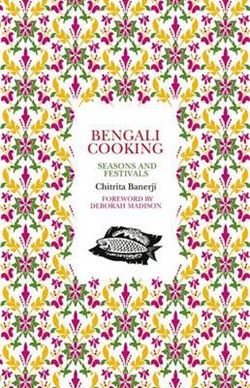
You don’t sit around and chat over a glass of water. The water is always accompaniment to the meal and it does not have a separate role. But tea is separate from food. It has this association with energy. Tea gives you energy tea, wakes you up. You’re bored? A cup of tea will get you out of that doldrums. When it comes to socialising, friends getting together or relatives getting together, the cup of tea connotes the sort of idea that you’re going to be energised and you will therefore be able to talk about things, discuss things.
I think for the Bengali at least, probably for the rest of India, with tea and coffee, caffeine was an eye-opening thing. That you could just have a drink, which was not water, which was not the forbidden alcohol, and still have the that physical enjoyment from drinking it… I feel that Bengali social life would be very different if tea didn’t exist. A cup of tea and a couple of biscuits would be a very standard gesture of hospitality.
Aravinda: Kolkata is also famous for lebu cha, the lemon tea spiced with black salt — how did that come about?
Chitrita: I have really asked a lot of people about it and nobody’s been able to give me a good answer. And again, I feel that there must be many, many people who hate the taste of milk. And yet, do want to drink tea. And some enterprising person came up with this idea, that, make the tea put in lime juice, some salt, some rock salt and it’ll just become something different yet it will be a cup of tea. Also remember, for most of these tea sellers, they operate without a refrigerator. So it’s very hard to keep the milk without spoiling. They have to keep boiling it, repeat the boiling, and that definitely changes the taste of the milk along with the tea to which they will add it. And, if it’s not very good quality tea, it will not taste so good by itself.
But quite apart from that, the lime juice and the funny spices that they add together, I think whoever came up with it, found that it was working and then maybe, others took it up too. In Bengal, if you ask people, who invented the rossagolla, there’s always this very clear answer: Nobin Chandra Das. I don’t think there is an inventor of lebu cha. I think it’s a sort of serendipitous happening that came from experimentation, and it took because it’s easy to make and also Bengalis do have a spicy palate.
We very rarely think of the snacks that we have with tea. They are not overly sweet things, they are salty things. The samosas are there, muri (puffed rice) is a very big thing. And muri is dressed up with tiny boiled potatoes, chickpeas and other ground spices to make it A really spicy concoction. So I think the natural proclivity for spices made the lebu cha very easy to popularise once somebody had come up with it.
Aravinda: Does one eat plain muri or is it always dressed up?
Chitrita: Even if you’re having it at home, the muri served with tea in the afternoon would be dressed up but minimally, with a bit of salt, and the other Bengali favourite, mustard oil, and chopped green chilies. That would be the very standard way of having muri with tea at home. Nothing fancy, no cooking skills required. Mustard oil by itself is a real palate a tingling element. A little bit of that and then you have the tea and the two different tastes really make it, at least for a Bengali, a favourite kind of a combination.
Aravinda: There’s a story about your Sanskrit tutor and muri that I remember. Would you mind sharing that story here?
Chitrita: So, the Sanskrit teacher. He was a funny guy. First of all, he loved food, so whatever my mother gave him, he would just gobble it up. But every day, she didn’t have sweets and things to give him. And on those days, he’d just say, “Didi, just give me some plain muri with the tea.”
The very first time she did it, I was amazed that instead of taking the muri and eating it and then having tea, he just poured some of it into the cup. And I remember saying, what are you doing? He ignored me, picked up this cup of hot tea and just slurped it. And he must have had a great deal of practice with his tongue because when he put the cup down again, I saw all the muri that he had put in had disappeared. Again, he picked up some more muri, put it in there, slurp, slurp, all the muri is gone. I don’t know how he did it.
There is this particular Bengali habit, I am not sure that I have seen it in the rest of India. Generally this custom today of serving tea in mugs did not exist say 30, 40 years ago. It was always cup and saucer. And one of the ways that some Bengali seem to like is pouring tea into the saucer and then slurping it from the saucer. I think my father would have been appalled, but I have seen so many people do it. I even asked some people why and they said, it’s a good way to cool the tea.
Why not blow on it or wait a little bit, I asked. And they’d say, no, no, no, then it becomes too cold. So apparently there is some magic temperature that the drinker can achieve by pouring tea into that little saucer and then slurping it from the saucer. I found it extremely difficult to think of you’re doing it myself. I’ve never tried it but that is also a very Bengali characteristic.
Aravinda: Where did your father buy his tea?
Chitrita: The kind of places say where my father used to go and buy tea, those little corner tea shops that every neighbourhood had, they would just have tea chests. You bought your tea leaf or tea dust, you went home and made your tea. Those stores are hardly to be seen because big companies are now selling packaged teas and those packages you can buy in the grocery store. This whole intimacy that my father experienced with this tea seller… the discussion would be like, “This came in today, would you like to try that?” or “I’ve been waiting for a particular kind of tea to come and I will tell you when it does.” Or my father would say, “The last time you talked me into buying that tea and it was very disappointing, very bland. I’m not going to listen to you anymore.” And then, then tea seller would always say, “Ah, why are you getting so impatient? Once in a while a man makes mistakes. Don’t write me off. I have lots of good suggestions for you coming.” They’ll go back and forth about this there was a personal quality too the acquisition of the tea, which now does not exist. I wonder how much that has reduced the enjoyment of tea among people.
Aravinda: From the outside, looking at Calcutta and Bengali society, it feels like tea is a big part of the social fabric, seen also in the books and films from here? Nowhere else do I see tea almost as a motif of a culture. Am I assuming a larger significance than there is?
Chitrita: I don’t think so. I think socializing and tea are inextricably linked in Bengali and has been for a long time. And so laterally that is reflected… In films we will see people getting together drinking tea, and also let us say, the more lighter of literary works, for instance, detective stories. The Bengali detective always drinks, tea. Like Sherlock Holmes and his pipe, the Bengali detective has to have his tea and cigarettes. There’s one very famous Bengali detective called Byomkesh and he has also a sidekick, Ajit, like Sherlock Holmes’ Watson, he has Ajit. So these two live together, they share a flat and Byomkesh deals with the mysteries while Ajit is the helper,. Many times in these stories you will have this description of Byomkesh picking up a cup of tea that is absolutely steaming and taking a long satisfying sip from it, and then a big puff on the cigarette.
This is something that has been generated over the years. Again, it is gradual but it is absolutely imprinted on the Bengali psyche. Bengalis also associate tea with thinking apart from everything else. Byomkesh is a thinking detective. He sits at home. He thinks things through and solves the mystery and tea is what helps him do that. The cigarettes also help I’m sure.
An even more famous cerebral, tea-loving detective is Feluda, created by the great film director Satyajit Ray. Feluda is almost as much a Bengali icon as Ray. And he is most particular about his tea. Very superior Darjeeling is what he insists on. And his favourite snack to accompany the afternoon cuppa is dalmoot which he gets made up according to his preference at a little shop called Kalimuddin’s, in Calcutta’s New Market. I was the first person to translate four of the Feluda novels into English, and I worked with Mr. Ray over several months. I noticed that Feluda’s tea preference was modelled on his own.
Aravinda: How many cups of tea do you drink in a day?
Chitrita: I have kind of cut down a bit. I used to drink four cups of tea a day, and now I have that down to only two. So partly because, you know, getting older, sleeping problems. I have my morning cup of tea and then I have one at 4 or 4.30. That changes when I go to Calcutta and I’m visiting friends and sometimes, I visit them at odd hours. But they will ask, “Cha kori?” And I always say Yes. To hell with sleep.
My neighbors in Calcutta are a couple in their late 70s, early 80s. And they are avid tea drinkers. When I visit, they will invite me in, go off to put the kettle on. They’re not my family, they’re not friends but I can’t tell you how many cups of tea I’ve enjoyed with them. Ashima is a little bit like my father. She will call me and say, “I found this new kind of tea which I think is really good. And I want to try it out with you.” It’s really wonderful to have her think of me when she’s got this special kind of tea.
Aravinda: Away from Kolkata, was tea hard to find?
Chitrita: Living in America, I have learned to really like a tea that probably my father wouldn’t like – Earl Grey tea. He’d probably say, what is all this perfume stuff? Had he been alive I would probably keep it a secret.
My first husband was from Bangladesh and I lived in Bangladesh for some years. And over there again for, well, partly because it was post-war, for a long time, things were very topsy turvy, things were hard to get. I found that the culture of tea existed in the same way that it did in West Bengal but the quality of tea was never going to be that great because Darjeeling just didn’t exist.
A lot of people I knew there – those who could afford it – would make these trips to Calcutta. For shopping. For two things, sarees and tea. If I visited them after their return, they would always make sure to offer me some Calcutta tea.
Aravinda: Where do you get your Darjeeling from now?
Chitrita: I live in Cambridge a short distance from Harvard Square, there used to be a wonderful tea store called Tealuxe. They had the best quality teas from all over the world. For a long time I would just go and buy Darjeeling from them in packages.
They went out of business about three years ago. So for a while I just didn’t know what to do and I was dreading the thought that my stock would run out and then – I have to share this story – I had reconciled to the fact that I’ll just have to buy packaged teas… I have to have tea. And then I wrote the piece for you. Two or three months after that, I got a call from a friend – I had shared the story with my friend, an Armenian American – and she had shared the story with this guy, also an Armenian American who runs a tea company. He wants to meet you, she said. I said, okay and we fixed a meeting. He had asked to meet at a tiny little restaurant. It was not really proper restaurant, more like a sandwich shop/ coffee shop where a lot of students go. I turn up there and then this guy said I must have tea with you. I said, yes, but I don’t know what kind of tea these people have. These people are not important, but they let me do whatever I want here, he said. He had brought three kinds of tea and he said, I’m going to brew them in their kitchen and I’m going to serve tea to you.
He brought tea in three different cups and then asked me to taste and tell me which one I liked. I noticed that he did not offer me milk or sugar, it had to be the pure tea tastes that he wanted me to have. One of them was absolutely wonderful, very, very fragrant, beautiful Darjeeling tea. So he said, well, I’ll make a bigger packet of this and mail it to you as a present. And then I found that MEM Tea, his company actually did mail order sales. Now I buy tea from them. He’s now sold the company to a friend and has moved to Maine when he bought a farm and he grows wild flowers.
Aravinda: In a way I’m really surprised but I’m also in a way not. I find that tea seems to touch people in ways beyond any understanding. So have you been able to create a world around tea in Cambridge?
Chitrita: One of the things I miss here is that very few people here among my friends enjoy tea. That’s one of the things I miss greatly. When I go to Calcutta, it’s so different. All the friends that I meet, we would get together over tea, that whole kind of, you know, communal pleasure, surrounding the cup of tea, I have not been able to recapture in my American life. In my American life, I am the solo tea drinker. I am the tea drinker who’s still making it with great care and still enjoying it. But it is not an active, lively enjoyment with other people. It’s a reminiscent enjoyment. It’s an enjoyment probably with the past, it’s an enjoyment of a drink that takes me back to the past. I wish it could be different. That can only happen when I go to Calcutta again.

Eat Your Books
Eat Your Books is a website that features Chitrita’s books. The site has indexed recipes from leading cookbooks and magazines as well recipes from the best food websites and blogs. Members can create your own personal ‘Bookshelf’. Imagine having a single searchable index of all your recipes – both digital and print!
Share this post with your colleagues
Signup and receive Tea Biz weekly in your inbox.



